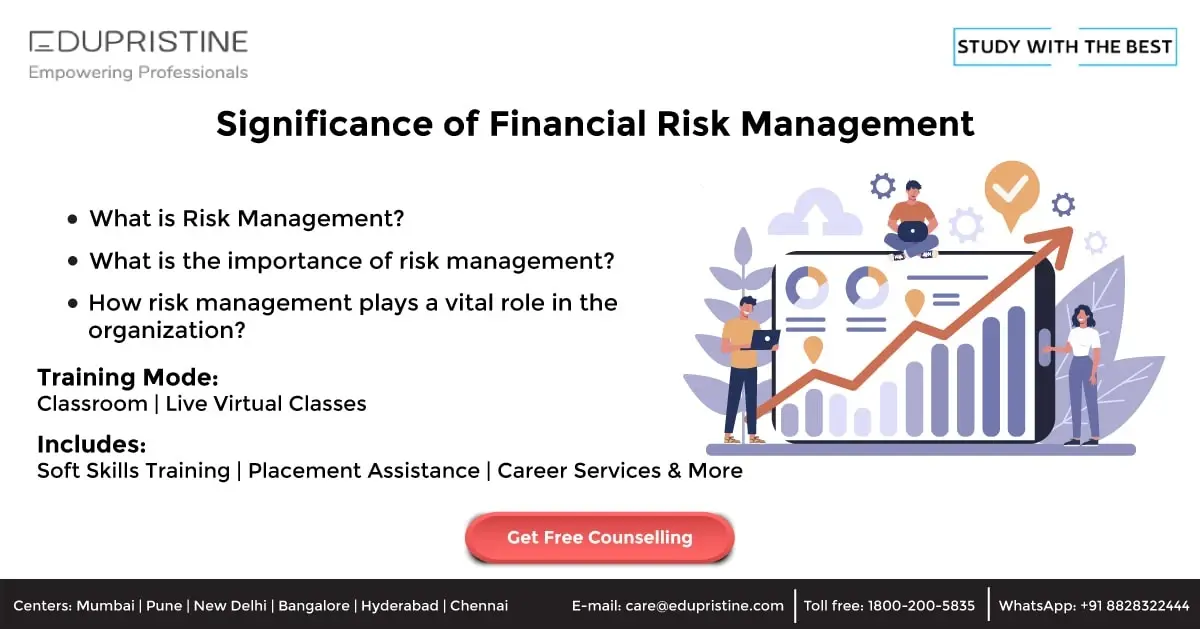Understanding the Importance of Risk Management in Contemporary Business Practices
Understanding the Importance of Risk Management in Contemporary Business Practices
Blog Article
Why the Significance of Risk Management Can not Be Ignored in Today's Economic situation
In today's swiftly advancing economic landscape, the duty of Risk Management has actually come to be crucial. The boosting volatility of markets, coupled with climbing unpredictabilities, demands a durable system to identify and mitigate potential risks. Failing to do so can lead to extreme economic and reputational effects, not just for private organizations, yet likewise for the broader economic climate. This increases an essential concern: can the significance of Risk Management in guaranteeing security and sustainability be forgotten? The following discourse aims to explore this in higher deepness.
Understanding the Principle of Risk Management

The Duty of Risk Management in Today's Economy
Having understood the concept of Risk Management, we can now discover its function in today's economic climate. In the context of an unforeseeable economic landscape marked by rapid global occasions and technological adjustments, Risk Management becomes a vital tactical element, contributing to the stability, sustainability, and overall strength of economic situations on both a macro and mini range.
The Effect of Neglecting Risk Management
Overlooking Risk Management can lead to alarming repercussions for any type of service or economic climate. The international economic crisis of 2008 serves as a raw suggestion of the disastrous effect that neglecting Risk Management can have on the economic climate at huge. Hence, disregarding Risk Management not only threatens specific organizations yet can undercut the whole economy, highlighting the critical role played by effective Risk Management in today's financial landscape.
Trick Components of Efficient Risk Management Methods
Reliable Risk Management approaches revolve around two essential parts: identifying prospective threats and carrying out reduction measures. To guarantee the stability and sustainability of a service, these aspects need to not be forgotten. In the adhering to conversation, these crucial aspects will be checked out in detail.
Identifying Potential Threats
Why is recognizing possible dangers vital in any type of Risk Management strategy? Recognition of possible threats is the foundation of any type of efficient Risk Management method. It includes the methodical exam of the company landscape, both interior and external, to reveal hazards that might hinder an organization's calculated objectives. Identifying potential risks permits organizations to prepare for issues, instead of simply react to them. This proactive strategy empowers businesses to take care of unpredictability with confidence, by highlighting locations that require further focus and preparation. It likewise enables them to focus on resources effectively, concentrating on dangers that might have one of the most considerable influence on their operations. In general, the procedure of determining potential dangers is an important action in promoting company strength and promoting lasting growth.
Executing Mitigation Actions
Browsing through the volatile company waters, organizations begin on the essential journey of executing reduction actions as component of their Risk Management approaches. These steps, created to minimize the influence of possible threats, create the backbone of a robust Risk Management strategy. They include different techniques, including moving the Risk to one more event, avoiding the Risk, minimizing the unfavorable result or chance of the Risk, or also accepting some or all the effects of a specific Risk.

Situation Studies: Effective Risk Management in Technique
Regardless of the complexities involved, there are numerous circumstances of effective Risk Management in practice that show its vital role in organization success. Boeing, the aerospace giant, took care of to alleviate the Risk of changing money prices by hedging other against the buck using onward contracts. An additional instance is Toyota's response to the 2011 Japan quake. The car manufacturer rapidly developed a risk Management team that minimized manufacturing downtime by identifying alternative suppliers. In a similar way, in the economic field, Goldman Sachs weathered the 2008 economic disaster through a durable Risk Management program that prepared for the subprime home loan situation. These circumstances emphasize that successful Risk Management can not only secure organizations from prospective dangers yet also enable them to seize chances.
Future Trends in Risk Management: Adapting to a Dynamic Economic Climate
Looking ahead, the landscape of Risk Management is poised for significant modifications as it adapts to a dynamic economic situation. Technological innovations are expected to change the area, with automation and man-made intelligence playing a key function in Risk recognition and mitigation. At the very same time, the boosting complexity of global markets and the changability of geopolitical events are making Risk Management a lot more tough.
Verdict
Finally, Risk Management plays an essential function in today's interconnected and unstable economy. Its neglect can lead to significant implications for organizations and the broader economic climate. Successful Risk Management strategies can reduce potential dangers and reduce losses, important for the security and sustainability of a company. As the economy remains to evolve, so should take the chance of Management techniques, underscoring its continuous importance in an ever-changing service landscape.
An appropriate Risk my response Management approach is not about eliminating dangers completely - a feat nearly impossible in the unpredictable globe of company. Therefore, overlooking Risk Management not only threatens private organizations yet can destabilize the whole economic climate, highlighting the critical function played by efficient Risk Management in today's financial landscape.
Effective Risk Management techniques revolve around 2 key components: executing and identifying prospective risks mitigation actions.Why is identifying potential threats vital in any Risk Management strategy? They include different approaches, including transferring the Risk to an additional party, avoiding the Risk, minimizing the negative impact or chance of the Risk, or also approving some or all the repercussions of a particular visit this page Risk.
Report this page